Wildflowers, Grasses and Other Nonwoody Plants
Media
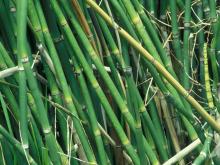
Species Types
Scientific Name
Equisetum (3 spp. in Missouri)
Description
Horsetails, or scouring rushes, are in the genus Equisetum. They’re easy to recognize with their jointed, hollow stems. Like ferns, they reproduce via spores instead of flowers and seeds.
Media
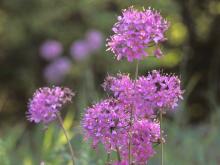
Species Types
Scientific Name
Allium stellatum
Description
Wild onion is edible and is also favored by native-plant gardeners, who enjoy its showy umbels of pink flowers and tolerance of dry, rocky sites. This Ozark species blooms in summer and fall.
Media
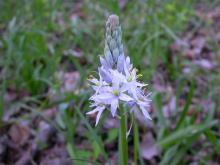
Species Types
Scientific Name
Camassia scilloides
Description
In spring, wild hyacinth bears an elongated cluster of pale blue flowers with prominent anthers that sway on stalks up to 2 feet tall.
Media

Species Types
Scientific Name
Liatris aspera
Description
Rough blazing star is fairly common and scattered nearly statewide. To distinguish between Missouri’s nine species in the genus Liatris, start by noting details of the flower structure. It’s not hard when you know what to look for.
Media
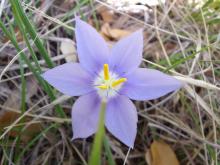
Species Types
Scientific Name
Nemastylis geminiflora
Description
Celestial lily, in the iris family, blooms only in the morning. Its showy, lavender-blue flowers shine like six-pointed stars on glades and prairies in southern Missouri and the eastern Ozarks.
Media
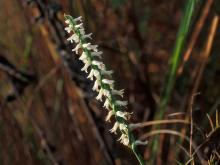
Species Types
Scientific Name
Spiranthes cernua
Description
Nodding ladies’ tresses is the most common of Missouri’s eight species of ladies' tresses. The flowers are arranged in a spiral pattern on the upright flowering stem. Each small flower is a little white orchid.
Media

Species Types
Scientific Name
Sisyrinchium campestre
Description
It has grasslike leaves, but it’s not a grass. In fact, it’s in the same family as the common garden iris! Four species of blue-eyed grass grow in Missouri, and this one, often found on prairies, glades, and pastures, is the most common.
Media

Species Types
Scientific Name
Hypoxis hirsuta
Description
Yellow star grass grows throughout the tallgrass prairie region. Imagine the thoughts of pioneers when they gazed upon these bright little lilies during stops along their westward journey!
Media
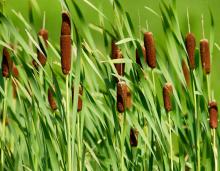
Species Types
Scientific Name
Typha spp.
Description
Missouri’s cattails are all tall wetland plants with narrow, upright leaves emerging from a thick base, and a central stalk bearing a brown, sausage-shaped flower spike.
Media

Species Types
Scientific Name
Chara spp.
Description
These aquatic algae look like regular vascular plants. Chara has a crisp, gritty texture, a musky odor, and gray-green, needlelike structures that resemble leaves.
See Also
About Wildflowers, Grasses and Other Nonwoody Plants in Missouri
A very simple way of thinking about the green world is to divide the vascular plants into two groups: woody and nonwoody (or herbaceous). But this is an artificial division; many plant families include some species that are woody and some that are not. The diversity of nonwoody vascular plants is staggering! Think of all the ferns, grasses, sedges, lilies, peas, sunflowers, nightshades, milkweeds, mustards, mints, and mallows — weeds and wildflowers — and many more!





















